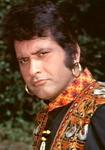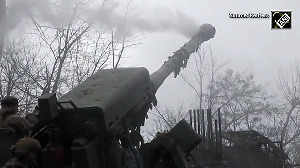Overcoming insurgency through development in Tripura secures CM Sarkar’s re-election, says Aditi Phadnis
The counting of ballots for the 60-seat Tripura assembly is due on February 28, and it is widely expected that Chief Minister Manik Sarkar will be re-elected to power. If he is, it will be his fourth term as the chief minister of Tripura. And he will become the longest serving chief minister of northeast India, besting Arunachal Pradesh Chief Minister Gegong Apang’s 19-year rule.
What is best known about Sarkar is that he is one of the poorest candidates in Tripura -- he lives on a salary of Rs 5,000 a month, which is paid to him from own his party, the Communist Party of India - Marxist, and has no house of his own. What he earns as the chief minister, he gives to the party.
His predecessor Nripen Chakraborty was no different. In the 1980s, visitors who went to see him had to sit on an upturned steel trunk because there was no sofa in his official residence, and his washing was hung on a line in the adjoining room, presumably to protect it from the rain.
Tripura is steeped in poverty, and its chief ministers also like to be poor. There seems to be no particular reason for this fetish for poverty, except that it helps the CPI-M win elections again and again. This time, too, being one with the people has helped.
Of all the northeastern states, Tripura is judged to be the least corrupt. Unlike West Bengal under the Left Front -- where one had to be a party member to file an FIR in the local police station, or be accompanied by a member of the party to the station -- in Tripura, the government not just governs, but rules. That is evident everywhere, but most of all, in the remarkable way in which the tiny state has beaten back insurgency.
Tripura’s tribal majority demography underwent a sea change as a result of unhindered migration from former East Bengal and subsequently, from Bangladesh. The tribals were pushed to the hills, and the politics and administration in the state was dominated by the Bengali-speaking locals and migrants. Insurgency started as a protest movement against this disempowerment. The first organised-armed tribal movement, Sengkrak (clenched fist), originated in the mid-1960s because non-tribal refugees settled in the tribal reserve forest areas.
The Tripura Upajati Juba Samiti in 1971, followed by the Tripura National Volunteers in 1981; the National Liberation Front of Tripura in 1989 and its armed wing, the National Holy Army and All Tripura Tiger Force, in July 1990 came to dominate the political discourse. The last two disputed the merger of the kingdom of Tripura with the Indian Union, demanded sovereignty for Tripura and the deportation of ‘illegal migrants’.
High-handedness by the central police forces and the army usually provides the spark for insurgency, which feeds on economic deprivation and becomes an alternative discourse. In Tripura, Sarkar couldn’t dramatically alter the standard of living of the people because the tiny landlocked state attracted no industry, investment or development.
But what he did was to plant rubber on a maniacal scale. It takes about five years for a rubber plantation to begin yielding latex. When it does, an acre can get you an income amounting to Rs 1 lakh a year. Even on the smallest landholding, Rs 8,000 to Rs 9,000 a month was enough to sustain a small family.
To ensure the commodity could be marketed, he encouraged the formation of self-help groups. There are more than 35,000 SHGs with 10 members each. To be sure, unemployment levels are still high -- but that is because there is no industry.
Because the paramilitary forces were kept in leash, Tripura has seen next to no human rights violations by police forces. Trite as it may sound, law and order combined with development, has yielded results in curbing insurgency. When you study Tripura, you realise how easy it can be.
With India normalising relations with Bangladesh, Tripura has the most to gain. It has untapped reservoirs of natural gas and, if the East-West corridor can go through Tripura, the state can become the gateway to Southeast Asia. A big bonus would be a transit passage through Bangladesh, which has an 865 km border with Tripura.
D N Sahay, a policeman who was the governor of the state once, says the rest of India needs to learn how to control insurgency from Tripura. He also says Communist Tripura can never become Communist West Bengal. The most telling is Sarkar’s own comment, “The electorate of West Bengal punished the Left Front government for its weaknesses and wrongdoings”.








 © 2025
© 2025